Building muscle at home is not only possible, but it can be highly effective. Many people think they need a gym full of equipment to build strength and muscle, but that’s not true. With the right mindset, exercises, and consistency, you can achieve great muscle growth without ever leaving your house. This content will show you how to build muscle at home using simple equipment and bodyweight exercises.
Understanding Muscle Growth
Before we dive into the specifics, it’s important to understand how muscle growth works. When you work out, your muscles undergo stress, causing tiny tears in the muscle fibers. As your body repairs these tears, the muscles become stronger and grow larger. This process is called hypertrophy. To promote hypertrophy, you need to apply enough resistance to challenge your muscles, allow them to recover, and ensure proper nutrition.
While lifting heavy weights at the gym is one way to apply resistance, it’s not the only way. Bodyweight exercises, resistance bands, and a few basic home gym tools can also provide the necessary stimulus for muscle growth.
The Basics of Building Muscle at Home
Building muscle at home requires a combination of the right workouts, proper nutrition, and rest. Here’s how you can get started.
Focus on Progressive Overload
Progressive overload means gradually increasing the intensity of your workouts to keep challenging your muscles. This can be done by:
- Increasing the number of reps or sets.
- Increasing the resistance or weight.
- Decreasing rest time between sets.
- Changing the angle of exercises.
For example, if you’re doing push-ups, you can increase the difficulty by elevating your feet or adding a weighted vest. If you’re using dumbbells, you can gradually increase the weight as you get stronger.
Consistency is Key!
Building muscle takes time and consistency. You need to commit to a regular workout routine. Aim for at least three to four workout sessions per week. If you stick to a consistent routine, you’ll start seeing improvements in muscle size and strength.
Target Different Muscle Groups
To build muscle evenly, you need to work on all muscle groups. A well-rounded workout routine should include exercises for your:
- Chest
- Back
- Shoulders
- Legs
- Arms
- Core
Make sure to vary your workouts to target different areas of the body. This will promote balanced muscle growth.
Proper Nutrition
What you eat plays a significant role in building muscle. You need to consume enough protein to repair and grow your muscles. Aim for 1.6–2.2 grams of protein per kilogram of body weight. Include healthy fats and carbohydrates in your diet to fuel your workouts and aid recovery.
It’s also important to eat at a slight calorie surplus. This means consuming more calories than your body burns to provide the energy needed for muscle growth. However, be cautious not to overeat, as excessive calories can lead to fat gain.
Rest and Recovery
Muscle growth occurs during rest, not while you’re working out. After a workout, your muscles need time to recover and rebuild. Be sure to get enough sleep (7–9 hours per night) and give your muscles at least 48 hours to recover between workouts targeting the same muscle group.
Best Home Workouts for Building Muscle
Now that you understand the basics, let’s talk about effective exercises for building muscle at home. These exercises can be done with minimal equipment or just your bodyweight.
Push-Ups
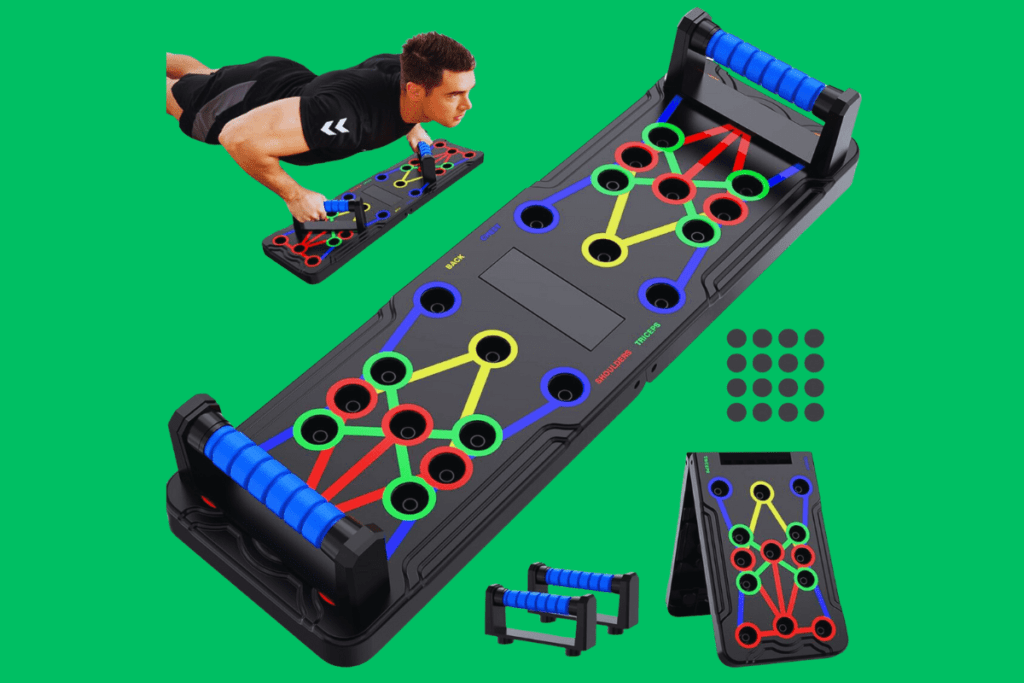
Push-ups are one of the best exercises for building chest, shoulder, and tricep muscles. They can be modified to make them easier or more challenging.
How to Do a Push-Up:
- Start in a plank position with your hands slightly wider than shoulder-width apart.
- Lower your body until your chest almost touches the ground.
- Push back up to the starting position.
If regular push-ups are too difficult, start with knee push-ups. To make them harder, elevate your feet or add a weighted vest.
Pull-Ups
Pull-ups target the back, biceps, and shoulders. They can be performed on a pull-up bar or any sturdy horizontal surface. If you don’t have a pull-up bar, consider purchasing one or using a doorframe pull-up bar.
How to Do a Pull-Up:
- Hang from the bar with your palms facing away from you.
- Pull your chin above the bar, then lower back down.
- If pull-ups are too difficult, start with assisted pull-ups using a resistance band.
If you can’t do a full pull-up, work on assisted pull-ups or inverted rows (underhand grip, pulling your chest toward a low bar).
Bodyweight Squats
Squats are excellent for building leg and glute muscles. You don’t need any equipment for bodyweight squats, and they can be easily modified to increase difficulty.
How to Do a Squat:
- Stand with your feet shoulder-width apart and your toes slightly turned out.
- Lower your hips back and down, keeping your chest up and knees behind your toes.
- Push through your heels to return to the standing position.
To make squats more challenging, try Bulgarian split squats, pistol squats, or add a jump at the top for jump squats.
Dumbbell Bench Press
If you have a pair of dumbbells, the dumbbell bench press is a great chest and tricep exercise. You can do this on a bench or the floor.
How to Do a Dumbbell Bench Press:
- Lie on your back with a dumbbell in each hand, elbows bent at 90 degrees.
- Press the dumbbells up toward the ceiling, then lower them back down.
Start with a lighter weight and gradually increase as you get stronger.
Dumbbell Rows
Dumbbell rows target the back and biceps. They can be done while standing or bent over, depending on the variation.
How to Do a Dumbbell Row:
- Hold a dumbbell in each hand with a slight bend in your knees and your back flat.
- Pull the dumbbells toward your torso, squeezing your shoulder blades together.
- Lower the dumbbells back down.
Use a heavier weight or increase the number of sets and reps.
Lunges
Lunges target the legs, glutes, and core. They can be done with body weight or with added resistance (dumbbells or a barbell).
How to Do a Lunge:
Stand with your feet together and take a big step forward. Lower your back knee toward the floor, keeping your front knee behind your toes. Push through your front foot to return to the starting position.
Hold dumbbells in your hands to increase the difficulty of the lunge.
Plank
Planks are one of the best exercises for building core strength. They also help improve stability and posture.
How to Do a Plank:
- Start in a push-up position but with your forearms on the ground.
- Keep your body in a straight line from head to heels.
- Hold the position for as long as you can.
To make planks harder, try side planks or add leg lifts while holding the position.
Glute Bridges
Glute bridges are great for targeting the glutes, hamstrings, and core. You can make this exercise harder by adding a resistance band or holding a weight.
How to Do a Glute Bridge:
- Lie on your back with your knees bent and feet flat on the floor.
- Push through your heels to raise your hips toward the ceiling.
- Lower your hips back down.
Progression Tips:
Add a weight across your hips or perform single-leg glute bridges for more difficulty.
Dips
Dips work the triceps, chest, and shoulders. You can do dips using parallel bars, a bench, or a sturdy chair.
How to Do a Dip:
- Place your hands on a bench or chair behind you, with your legs extended out in front.
- Lower your body by bending your elbows until your arms are at a 90-degree angle.
- Push yourself back up.
Elevate your feet or add weight to make dips more challenging.
Resistance Band Exercises
Resistance bands are inexpensive and versatile tools for building muscle. You can use them to perform exercises like bicep curls, chest presses, and rows. Resistance bands also add variety to your workouts.
Conclusion
Yes, you can definitely build muscle at home. With the right exercises, consistency, and nutrition, you can achieve impressive muscle growth without ever stepping foot in a gym. Whether you choose bodyweight exercises, dumbbells, or resistance bands, the key is to challenge your muscles, progressively increase the difficulty of your workouts, and give your muscles time to recover.
Building muscle at home takes time, but with dedication and the right approach, you can see significant results. Stay consistent with your workouts, eat a balanced diet, and rest enough to allow your muscles to grow. With these steps, you can build muscle at home just as effectively as you would in a gym.
Want more home workout tips, gear recommendations, and motivation straight to your inbox? Subscribe to our free newsletter and stay ahead on your fitness journey—no spam, just pure gains!


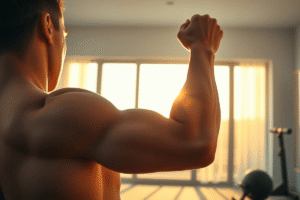


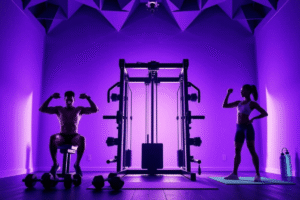
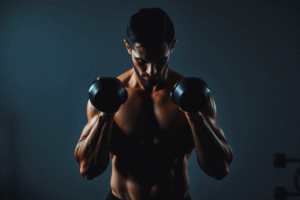
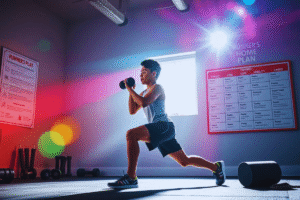
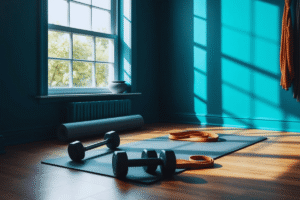


5 Comments
**mind vault**
mind vault is a premium cognitive support formula created for adults 45+. It’s thoughtfully designed to help maintain clear thinking
**mind vault**
mind vault is a premium cognitive support formula created for adults 45+. It’s thoughtfully designed to help maintain clear thinking
Sie können Boni erhalten, Drops & Wins spielen, sich Megaways-Titel von Pragmatic Play ansehen und die neuesten Ergänzungen im Bereich „Neue“ Spiele
ausprobieren. BdmBet Casino ist eine einzigartige Online-Institution, die den Spielern eine breite Palette von Glücksspielen und
eine komfortable Umgebung für Glücksspiele bietet. Egal, ob Sie ein Gelegenheitsspieler oder ein High Roller sind, BDMBet hat
für jeden etwas zu bieten. Als aufstrebende Marke hat sich das BDM
bet Casino durch eine vielfältige Auswahl an Spielautomaten, klassischen Tischspielen und Live Dealer Angeboten schnell einen Namen gemacht.
Registrieren Sie sich in wenigen Minuten bei BDM
Bet und erhalten Sie einen Willkommensbonus, den Sie sowohl für
Sportwetten als auch für Spielautomaten verwenden können.
Diese Lösung spart nicht nur Speicherplatz, sondern ermöglicht auch schnelle Updates und Verbesserungen. BDM Bet
Casino setzt auf moderne Technologie, um Spielern ein nahtloses
mobiles Spielerlebnis zu bieten. BDM Bet Casino bietet eine breite
Palette an Zahlungsmethoden für deutsche Spieler.
Er umfasst nicht nur Bonusgeld, sondern auch Freispiele für beliebte Slots.
Der Willkommensbonus fällt besonders großzügig aus und erstreckt sich über mehrere Einzahlungen. Die niedrigen Mindesteinzahlungen ab 2€
werden als nutzerfreundlich empfunden.
References:
https://online-spielhallen.de/category/uncategorized/
Sol Casino bietet eine Vielzahl von Zahlungsmethoden an, die sicherstellen, dass Spieler Gelder
sicher und effizient einzahlen und abheben können.
Leider bietet Sol Casino keinen Live Casino-Bereich an, der speziell
für deutsche Spieler konzipiert ist. Die Spieler können live über Streaming-Technologie mit
den Dealern kommunizieren und ihre Entscheidungen treffen.
Sol Casino bietet ein umfangreiches Angebot
an Spielen, darunter Slots, Tischspiele, Live Casino und Crash Games.
Wir bieten Ihnen ein umfangreiches Portfolio an Spielen, von Slots bis
hin zu Live-Tischspielen, sowie innovative Zahlungsmethoden und professionelles Kundenservice.
Mit über 7.000 Slot-Maschinen, Live-Tischspielen und einer Vielzahl an anderen spannenden Spielen findest du sicherlich das Richtige für
dich. Neue Spieler erhalten bis zu 500 € Bonus plus 200 Freispiele.
Das bedeutet, dass das Casino sich an strenge Richtlinien und Sicherheitsstandards
halten muss, um sicherzustellen, dass Spieler in einem fairen und sicheren Umfeld spielen können.
References:
https://online-spielhallen.de/boaboa-casino-auszahlung-ihr-umfassender-leitfaden/
**aqua sculpt**
aquasculpt is a revolutionary supplement crafted to aid weight management by naturally accelerating metabolism